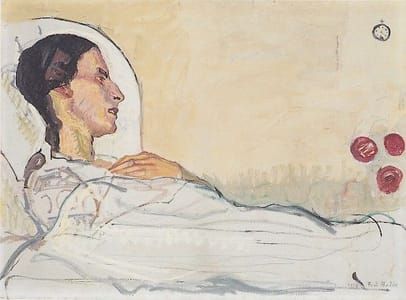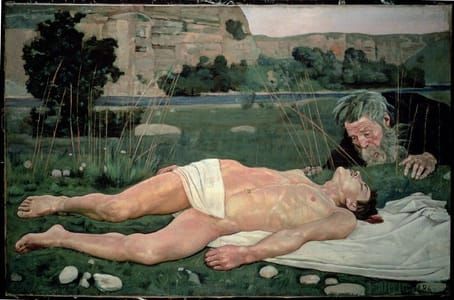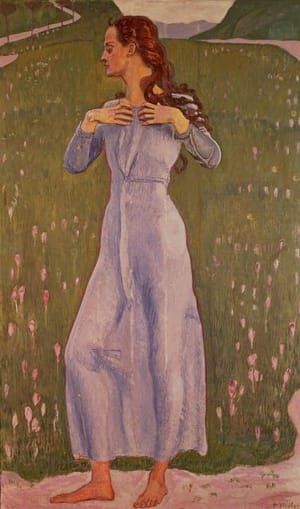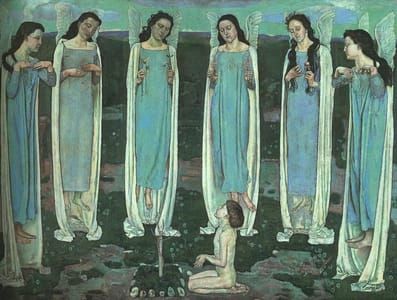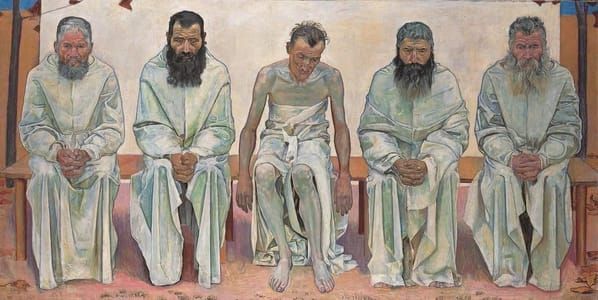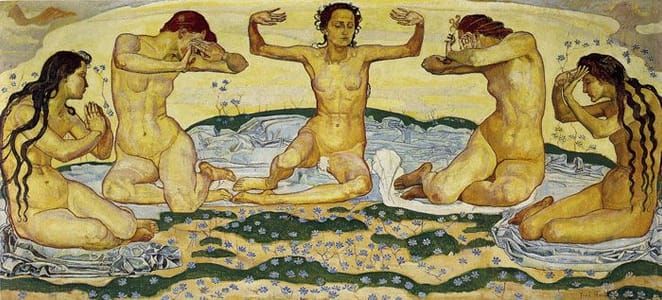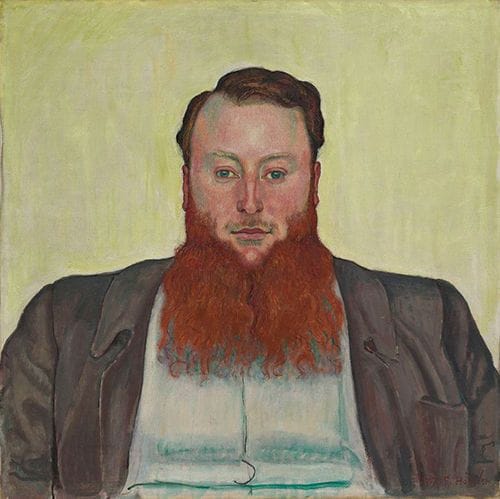

James Vibert, 1907
Ferdinand Hodler
It's hard to believe in the more than six years that the Art Institute blog has been up and running, we've never once mentioned this painting. Why, you might ask? Is the artist famous? Not really. Although Ferdinand Hodler was one of Switzerland's leading artists at the turn of the 20th century, his work has not been shown extensively outside of Europe. Then maybe the subject of the painting is famous? Again, no. James Vibert was one of Hodler's closest friends and a Swiss sculptor who studied with Rodin, but he's not well known. The reason is much simpler. This is just one of those paintings that jumps off the gallery wall at you. Perhaps it's the big red beard. Perhaps it's Vibert's size (he was referred to as "herculean"). Perhaps it's the impenetrable gaze. Or maybe it's the fact that the painting is virtually symmetrical. Hodler developed a strict aesthetic theory he called parallelism, in which he relied heavily on symmetry and repetition to create overall unity. About this theory, Hodler wrote, "We differ one from the other, but we are like each other even more. What unifies us is greater and more powerful than what divides us." Whatever the reason, this is a painting that's difficult to simply walk by. (http://www.artic.edu/blog/2015/08/21/work-of-the-week-hodler)
© 1907 Ferdinand Hodler
Ferdinand Hodler
artistArthur
coming soon
